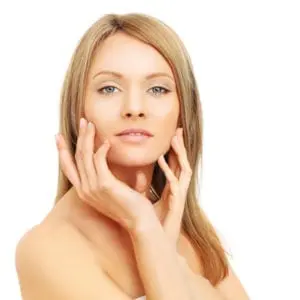 Actinic Keratoses (AK) may occur due to a number of causes. The skin care specialist will discuss the possible causes and advise appropriate dermatology treatment to a patient.
Actinic Keratoses (AK) may occur due to a number of causes. The skin care specialist will discuss the possible causes and advise appropriate dermatology treatment to a patient.
Suncoast Skin Solutions, led by dedicated board certified dermatologist Dr. Christopher Ewanowski, provides advanced skin care treatments to patients in Tampa, Brandon, Lutz, Seminole, Riverview, Brooksville, Winterhaven, Daytona Beach, Largo, St. Petersburg, Ocala, The Villages Central Florida, Florida, and surrounding communities in the illustrious Sunshine State.
Sun Exposure – A Key Cause
Almost all actinic keratoses (AKs) occur due to chronic sun exposure. The sun damage that the skin sustains is cumulative. Therefore, even short periods of sun exposure add up over a lifetime.
Around 70 to 80 percent of ultraviolet (UV) radiation can penetrate through clouds making even cloudy days unsafe. These destructive rays can reflect off snow, sand, and other surfaces creating extra exposure.
The amount of time spent in the sun over the years increases the chances of AK development. This is why outdoor workers and the elderly face a higher risk. AK development is slightly higher in males as they tend to spend more time in the sun and do not use sun protection as much as women do.
While AKs do occur in some people in their 20s as well, they develop more often in people aged over 50. Some experts state that almost everybody above the age of 80 has AKs.
The proximity of a person to the equator increases their likelihood of developing AKs.
Other Causes
The UV rays emitted by the lights in a tanning salon may be even more harmful than those given off by the sun. Therefore, dermatologists advise against indoor tanning. Tanning increases the risk of developing AKs. Sometimes AKs may also occur due to significant exposure to x-rays or various industrial chemicals.
Who is at the highest risk?
The people that are most at-risk for sun damage are those with fair skin, freckles, red or blonde hair, and green, blue, or gray eyes. They have a higher possibility of AK development in they spend extended periods in the sun and live long enough for the damage to manifest as AKs.
While Hispanics, African Americans, Asians and other ethnicities with darker skin tones are not as vulnerable to AKs as Caucasians, anyone can be affected by skin cancer.
The late detection of skin cancers in many African Americans and Hispanics results in these cancers being treated at more advanced stages in comparison to Caucasians.
People who have a weakened immune system due to AIDS, organ transplantation, chemotherapy, or other reasons are less able to respond to the harmful effects of UV rays and are much more likely to develop AKs. It is also important to note that long-term UV exposure also weakens the immune system and reduces its ability to address UV damage.
Why you should be concerned?
While most AKs remain benign, they indicate that a person has sustained sun damage and can potentially develop any form of skin cancer, particularly the second most common type of the disease, squamous cell carcinoma (SCC).
A person with one AK may develop more. The chances of AKs developing into SCC depend on the number of untreated AKs and the older they are. Some researchers believe that AK is the initial form of SCC. Rarely, AKs may develop in basal cell carcinoma which is the most commonly occurring type of skin cancer.
Dr. Ewanowski’s skin care clinic receives patients from Tampa, Brandon, Lutz, Seminole, Riverview, Brooksville, Winterhaven, Daytona Beach, Largo, St. Petersburg, Ocala, The Villages Central Florida, Florida, and nearby areas.
SunCoast Skin Solutions Dermatology offices are located in Tampa / Hillsborough, St. Petersburg / Pinellas County, Brandon, Lutz (2 locations), Winter Haven, Largo, Riverview, Brooksville, Ocala, Largo at Bardmoor, Daytona Beach, Sarasota, and Palm Harbor, Florida. Contact us at 1-844-786-3376 or click here.

Recent Comments